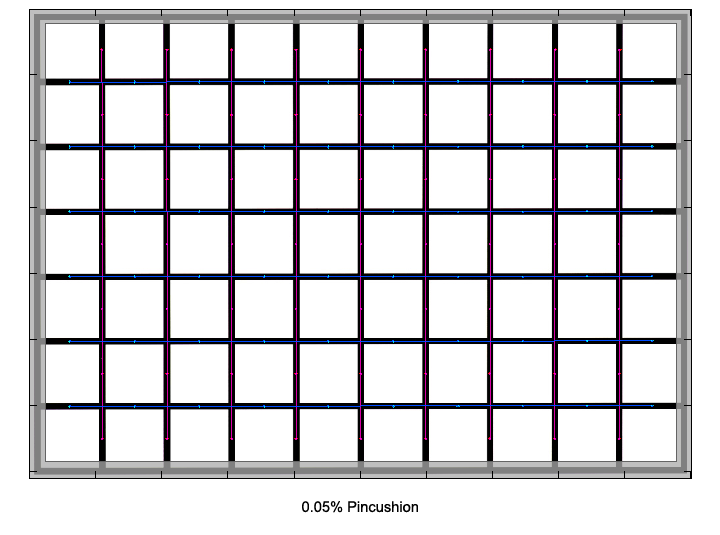|
Page 2 of 3

Distortion
Since the lens is designed for a much larger image circle than required for the small CX sensor, it's hardly surprising that the lens shows virtually no distortion on Nikon 1 cameras.

The chart above has a real-world size of about 120x80cm.
Vignetting
For the same reason as mentioned in the distortion section, vignetting is no issue on CX cameras.

MTF (resolution)
Wide open, the lens struggles a bit on the high density CX sensor. The image center and borders show good resolution at f/1.8, the extreme corners are just fair at this aperture.
Stopping down increases the resolution across the frame considerably. At f/2.8, the results are already excellent in the image center and remain on this high level until diffraction takes its toll starting at f/8.
The borders and corners improve to very good resolution at f/2.8 and even reach excellent values at f/4.
The lens shows some focus shift when stopping down (residual spherical aberration).
Please note that the MTF results are not directly comparable across the different systems!
Below is a simplified summary of the formal findings. The chart shows line widths
per picture height (LW/PH) which can be taken as a measure for sharpness.
If you want to know more about the MTF50 figures you may check out the corresponding
Imatest Explanations

Chromatic Aberrations (CAs)
Chromatic aberrations (color shadows at harsh contrast transitions) are quite low with values of below 0.5 pixels at the image borders throughout the tested aperture range.
CAs can easily be corrected in software, in fact the Nikon 1 cameras automatically do so if you shoot JPGs.

Bokeh
One of the primary usage scenarios for a large aperture lens is to separate the main subject from the background. In such an image the quality of the bokeh (out-of-focus blur) is of major significance.
The blur potential of the lens is somewhat handicapped due to the rather small sensor of the Nikon 1 system. However, the lens still delivers quite pleasing background blur, even in the transition zone, where many lenses struggle to deliver smooth blur. Thanks to the rounded aperture blades, backgrounds highlight show a circular shape even stopped down. Unfortunately the high density CX sensor magnifies the bokeh fringing of the lens considerably, which influences the appearance of highlights.

Bokeh Fringing
Bokeh fringing is a common issue with relatively fast glass. It's visible as halos of different colors in out-of-focus areas - magenta (red + blue) in front of the focus point and green beyond.
Typical for most fast primes, the AF-S 85 shows noticeable bokeh fringing at large aperture settings, which can of course be reduced by stopping down.
In addition, these shots also show the slight focus shift when stopping down, which was mentioned in the MTF section.
|